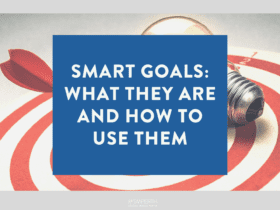Digital culture is a fast-moving beast
What was “in” yesterday, might not be so “in” tomorrow; and keeping up can be a mammoth task in and of itself.
So, to keep you one step ahead, we’ve compiled a list of social media buzzwords you can reasonably expect to see around the place in 2020.
- VR (virtual reality): while the technology is not quite ready to be deployed by marketers at scale, it is certainly on the move.What is it? It’s a computer-generated simulation of a three-dimensional image or environment that can be interacted with in a seemingly real or physical way using special equipment.
- AR (augmented reality): same as above! But what is AR? It is technology that superimposes a computer-generated image on the user’s view of the real world, creating a composite view. Pokemon Go! is a prime example of AR.
- MR (mixed reality): there’s a lot of “reality” to make sense of in 2017! MR is sometimes referred to as “hybrid reality”, and involves merging real and virtual worlds to produce new environments and visualisations where physical and digital objects co-exist and interact in real time.
- SMSS (Social Media Stress Syndrome): social media marketing is a high stress job! This year marketers are all about increased productivity and reduced stress and will be looking to achieve this by investing more budget, time and effort into dashboard-type, integrated platforms (Hootsuite, Buffer, Sprout Social etc.).
- Internal collaboration: a hot topic – how social media can be better integrated with sales and marketing functionalities to perform better across all brand touch points.
- Digital Detox: in a similar vein to SMSS, Digital Detox is about helping digital marketers make balance a priority to ultimately improve productivity.
- Reputation economics: brands are increasingly aware that how they are perceived (reputation management) and rate of referral (word of mouth) goes a long way to determining win, churn and loss of business. Be prepared for a lot of talk around reputation economics and continued growth of influencer marketing.
- Bots: there are so many conversations going on across so many channels today (Facebook Messenger, Twitter and Skype), so there is going to be a lot of experimentation with conversation bots to manage this environment.
- Microinfluencers: minor celebrities (for example: YouTube stars) hold a great deal of social media power and studies are suggesting they are the best at generating high-quality word-of-mouth results because they are experts at leveraging social media to boost status. Watch this space.
- Ephemeral Social Media: content that disappears within a limited amount of time (Instagram Stories and Snapchat). It isn’t going anywhere because it keeps people coming back for more!
- Pay to play social: paid content is going from strength to strength, and networks are increasingly favouring a “pay for visibility” approach on their platforms.
- Omni-channel sales experience: a study out of America suggests Baby Boomers and Millennials alike are ready for an approach to sales that provides a seamless shopping experience online: from a desktop or mobile device, by telephone or in a bricks and mortar store. Consumers want it all to integrate!
- Tribes, community, and crowds: get ready for a lot more talk about meaningful relationship building! It’s all about maximum transparency with key audiences, and building brand trust and a sense of belonging.
- Real time engagement: using dedicated social media accounts for customer service applications – separating this function out from another account or page that posts daily content and updates will allow brands to provide this engagement in real time.
- Trendjacking: it is the practice of piggybacking publicity, visibility or engagement off a popular trend’s buzz. You could call it a refined form of viral marketing; it is going to hang around for a while.
- H2H Marketing (Human to Human): using inbound marketing to build human relationships instead of just focusing on conversions. Reaching out to another user to add value to his or her life in some way is what this trend is all about.
- Show Marketing: leveraging high quality, visual content to drive engagement.
- Employee amplification: refers to the technique of encouraging employees to share approved brand content on their social profiles.
- HTTPS: HTTPS stands for Hypertext Transport Protocol Secure which provides security services for transaction confidentiality, authenticity and integrity between HTTP servers and clients for web browsers.
- CRM: An acronym for Customer Relationship Management and has approximately 175,000 monthly searches on Google.
- Hyperautomation: Hyperautomation is based on the application of advanced technologies. For example, a self-sufficient bot that can conduct a variety of complex human tasks.
- Voice as User-Interface (VUI): Alexa, Siri, and Google Assistant are a regular part of our lives now. Experts predict that 50% of all searches will be conducted with voice searches by the end of 2020.









LET’S CONNECT